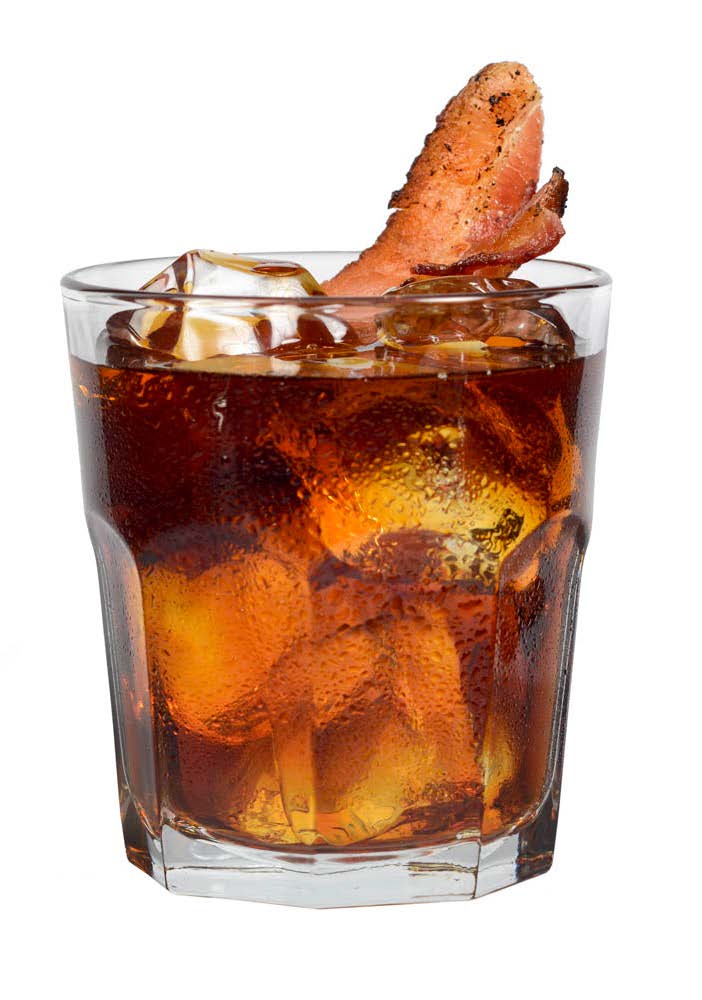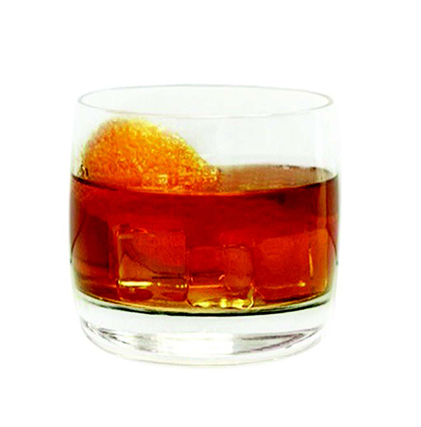The quiet face of bourbon has always been a mask of sorts: its awshucks folksy visage only a front for the shrewd minds that drive its determined growth. Bourbon whiskey, viewed as a rough-hewn drink and exalted above moonshine only by a few years in charred barrels, is instead the result of experienced and clever distillers, most more like scientists than the hillbillies of popular depiction. Even a couple of generations ago, when Prohibition silenced the stills, some families generated income by leaving the warehouses unlocked on certain nights, as mugs in Illinois-plated limos did a bit of late night shopping. The families, of course, knew nothing about the bags of cash delivered shortly afterward. People in Bourbon Country are smart.
But Prohibition’s bite was a wound that took decades to heal, and the ‘40s and ‘50s saw tremendous growth not in bourbon but in Canadian whiskey and its taste-alike, American-blended whiskey. And when the needle moved for bourbon in the ‘60s and ‘70s, as Buffalo Trace Distillery President Mark Brown notes, “the industry was focused on driving cost out, producing a highly efficient whiskey and turning the industry into GM and Ford.” In the process, Brown maintains they “drove the consumer out of the category.” Or perhaps it’s that other categories had more to offer than bourbon. Growth brands such as Jack Daniels, a Tennessee whiskey and not a bourbon, stood in for the real thing.
Bourbon meandered along until the introduction of Blanton’s Single Barrel Bourbon in 1984, drawn by Elmer T. Lee from a barrel in the middle of Warehouse H at the Ancient Age Distillery (now called Buffalo Trace). Its sales were anemic for years, but something was stirring the water nonetheless. Viewed alongside the burgeoning popularity of Maker’s Mark, notoriety if not sales helped unleash a flood of new whiskies of varying ages, proofs, and styles.

Maple Bacon Manhattan
2 parts Jim Beam® Maple
1/2 part sweet vermouth
1 dash angostura bitters
bacon strips

Bulleit Rye Old Fashioned
1.3 oz. Bulleit Rye
1 sugar cube
3 dashes bitters
2 lemon slices
2 orange slices
1 maraschino cherry
This was just after vodka had achieved its current status as the number one spirit category and accounted for about one quarter of all spirit sales; whiskey categories had been very quiet. Canadian whiskey started its ongoing decline in the late ‘80s, as did American-blended whiskey. The Scots seemed content to do things as they always had and their sales were stable enough. Single malt Scotch whiskey was growing slowly but evenly. Nonetheless, it remains surprising that no other whiskey-producing regions took note and that none saw fit to mimic some of bourbon’s tricks until years later.
Even today, Scotch makers continue with their usual age statement bottlings: Ten Year Old, Twelve Year Old and the like. Only a handful offer cask strength whiskies, and the words “single barrel” rarely appear on bottles. Canada seems still not to have noticed that the market has become far more diverse: there are more than five thousand spirit brands in the U.S. today, triple the offerings of two decades ago.
It could be argued that bourbon was forced to innovate, but today terms such as “small batch” (Woodford Reserve, anyone?), “single barrel”, “vintage whiskey” (Evan Williams has done particularly lovely work here) and “cask strength” are commonplace. Bourbon made it so. And bourbon makers author an almost continuous stream of new products, sometimes in the mold of Maker’s Mark style of “wheated bourbons” (a small dose of wheat is included in the corn-dominant mashbill), or with some unusual barrel finish, like Hillrock Solera Aged Bourbon (finished in Sherry barrels) or Jim Beam’s Devil’s Cut. These aren’t merely brand extensions. Among Paul Pacult’s 2013 Spirit Journal Top 10 Spirits, five are bourbons, four of them new expressions of established brands such as George T. Stagg, E.H. Taylor and Elijah Craig. Only three of those Top Ten are Scotch brands. Most of the new bourbons are much higher in proof than in years past, and the critics are swooning. Or maybe they are just tipsy.
The recent success of high octane bourbon reflects the inherent intensity that is the very soul of bourbon, a whiskey defined by new charred oak and the sweet earthiness of its corn-based mashbill. Buffalo Trace’s new Single Oak Project seeks to uncover bourbon’s other flavor parameters; by isolating 192 barrels, constructed from 96 trees, the distillery is trying to identify those barrel characteristics that help make bourbon delicious: is it the location of the trees? The type of oak? The aging of the staves? Or the portion of the tree (they’ve decided already that the top half is better)? Is it the number of growth rings per inch in the tree? Though that’s a sign of how geeky this project has become, the purpose is still potentially transformational. As good as their whiskies have been, Mark Brown still says, “We haven’t made the best bourbon yet.”
While bourbon sales easily dwarf those of rye, bourbons with rye-heavy recipes such as Bulleit have found an eager audience. Tom Bulleit, the seventh generation of his family in the bourbon business, notes that it was in the Bay Area that the idea for Bulleit Rye was born. “San Francisco has always been one of our best markets,” Tom relates. “It’s a connoisseur class there that liked our bourbon with almost double the rye in the blend, and they said, ‘why don’t you make a rye?’” Like Bulleit Bourbon, their rye is drier than many others and that may or may not please the most consumers. “It’s a different animal,” Tom says, “It’s your palate that determines if you like it or not.” Here is another illustration of bourbon’s ability to find an individual spot for each brand, far from the homogony of the earlier, mass-produced era.
But not all bourbon innovation will please the purists; flavored whiskies have become a significant sub-category for bourbon. Wild Turkey Honey may have been the first flavored whiskey of note back in the late ‘70s but Jim Beam’s cherry-flavored Red Stag release in 2009 opened up the cornucopia. Sales are strong whether the bourbons are flavored by honey, cinnamon, ginger or an ever-expanding grocery list of fruits. These are not the exalted products that distilleries like Buffalo Trace may dream about, but they are part of bourbon’s story and perhaps even its future.
As Mark Brown has said, “Clearly the difference [today] from the 1970s is that all bourbon then tasted one dimensional; from one distillery to the next, they were all the same, and that’s not really very clever.” But bourbon is clever today, more so than any other whiskey region. Don’t let those Kentucky accents fool you. Bourbon makers know exactly what they are about.

